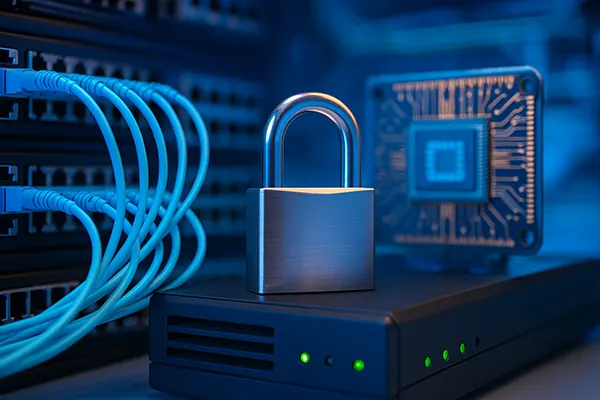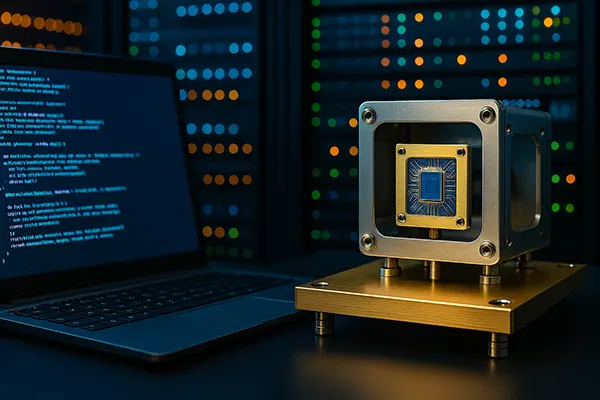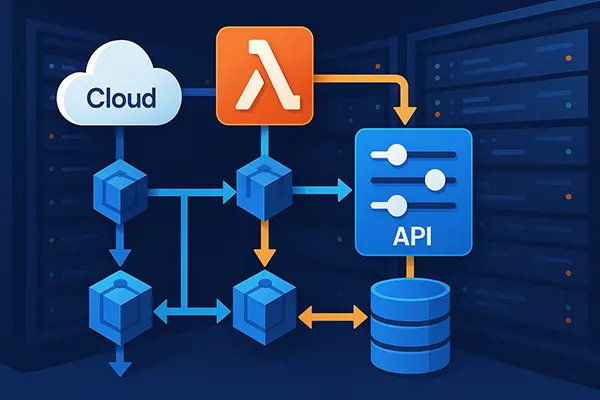Post-Quantum Cryptography in Modern Protocols: TLS, SSH, and VPN

As the era of quantum computing approaches, traditional cryptographic algorithms face an existential threat. Post-quantum cryptography (PQC) emerges as a safeguard, ensuring that data transmitted through key protocols like TLS, SSH, and VPN remains secure even in a world dominated by quantum machines. By 2025, the integration of PQC into these systems is not a theoretical concept but an active process shaping the future of global cybersecurity.
The Transition to Post-Quantum Cryptography
The migration from classical to post-quantum encryption is one of the most complex security transitions in decades. Classical systems rely on mathematical problems such as integer factorisation or discrete logarithms, which can be efficiently solved by quantum algorithms like Shor’s. Post-quantum cryptography replaces these with algorithms that resist quantum attacks, such as lattice-based, hash-based, and code-based schemes.
In 2025, governments and corporations are already adopting hybrid models that combine classical and quantum-resistant algorithms. This hybrid approach enables compatibility with existing infrastructure while preparing for a quantum-ready environment. The U.S. National Institute of Standards and Technology (NIST) has standardised several PQC algorithms, including CRYSTALS-Kyber for key exchange and CRYSTALS-Dilithium for digital signatures.
Enterprises that rely on secure data transmission—such as banks, healthcare providers, and defence organisations—are prioritising PQC integration. The growing awareness of “harvest now, decrypt later” attacks, where encrypted data is stored for future decryption once quantum computers mature, has accelerated adoption across industries.
Challenges of PQC Implementation
Transitioning to post-quantum algorithms is not without challenges. The increased key sizes and computational requirements of PQC schemes can impact system performance, particularly for devices with limited processing power. Furthermore, ensuring interoperability between classical and quantum-safe systems is critical during the migration phase.
Another key concern is algorithm agility — the ability to switch cryptographic algorithms quickly in case vulnerabilities are discovered. Organisations must implement flexible frameworks that allow for the replacement of algorithms without overhauling entire systems. Standards bodies and open-source projects, such as OpenSSL and OpenSSH, are actively developing such mechanisms.
Cybersecurity experts also highlight the importance of extensive testing and certification before deploying PQC solutions at scale. The objective is to ensure reliability, efficiency, and resistance not only to quantum attacks but also to classical exploitation techniques.
Quantum-Safe TLS and Secure Internet Communication
Transport Layer Security (TLS) is the backbone of secure web communication, protecting data exchanged between users and servers. As of 2025, PQC integration within TLS 1.3 is progressing rapidly, with hybrid key exchanges that pair CRYSTALS-Kyber with Elliptic Curve Diffie-Hellman (ECDH). This ensures that connections remain secure against both classical and quantum adversaries.
Major technology providers, including Google, Cloudflare, and Microsoft, are conducting large-scale PQC trials within their TLS infrastructures. These pilot projects aim to evaluate real-world performance metrics and refine hybrid deployment strategies. The lessons learned will guide the full adoption of PQC in browsers, APIs, and enterprise networks over the coming years.
Users may not notice the transition, as post-quantum TLS is designed to operate transparently. However, behind the scenes, it fundamentally changes how encryption keys are negotiated and authenticated, securing global web traffic against future quantum threats.
Impact on Global Digital Infrastructure
As post-quantum TLS becomes mainstream, internet service providers and certificate authorities will play a pivotal role in its rollout. Updated cryptographic libraries and protocols must maintain backward compatibility while ensuring quantum resilience. This transformation requires significant collaboration between public and private sectors worldwide.
By standardising PQC across browsers and servers, developers can prevent fragmentation of encryption ecosystems. In addition, cloud providers are integrating PQC-ready libraries into their API services, allowing developers to secure data without extensive cryptographic expertise.
The success of PQC integration within TLS will set a precedent for other communication protocols. It demonstrates that large-scale cryptographic transitions can be achieved without compromising usability or performance.

SSH and VPNs in the Post-Quantum Era
SSH (Secure Shell) and VPN (Virtual Private Network) protocols form the core of secure remote connections. In 2025, developers are actively integrating quantum-resistant algorithms to protect key exchanges and authentication processes. The Open Quantum Safe project, for instance, contributes open-source PQC implementations for SSH systems.
For VPNs, hybrid encryption models combine quantum-safe algorithms with classical standards such as RSA or ECDH to ensure secure tunnelling. Several enterprise VPN solutions have already introduced PQC-ready modes, offering protection for sensitive communications such as corporate data transfers or remote work sessions.
Adoption is particularly significant among industries with stringent compliance requirements, including finance, defence, and telecommunications. As regulatory frameworks evolve, PQC-enabled VPNs and SSH protocols will likely become mandatory for government and critical infrastructure systems.
Building a Quantum-Resilient Future
The successful integration of PQC into SSH and VPN protocols represents a key milestone toward a quantum-secure internet. Continuous collaboration between researchers, developers, and policymakers is essential to maintain momentum. Open-source projects and academic partnerships remain vital to identifying vulnerabilities and optimising algorithm efficiency.
Education also plays a critical role. Organisations must train IT professionals in the fundamentals of quantum-safe cryptography and ensure that transition plans are embedded within their cybersecurity strategies. The shift to PQC is not a one-time event but a continuous process requiring vigilance and adaptability.
Ultimately, post-quantum cryptography serves as a reminder that security is a moving target. By preparing now, society can ensure that the foundations of digital communication remain trustworthy long after quantum computing becomes reality.
Popular topics
-
 High-Performance Networking...
High-Performance Networking...High-performance networking has become a core requirement for modern …
-
 Edge AI and TinyML: How Int...
Edge AI and TinyML: How Int...Edge-level artificial intelligence has become one of the most …
-
 How to Programmatically Bui...
How to Programmatically Bui...Creating a flexible and efficient microservices ecosystem in 2025 …
-
 The Role of Artificial Inte...
The Role of Artificial Inte...Artificial intelligence has become a practical component of gambling …
-
 Virtual and real hosting, w...
Virtual and real hosting, w...Today, many providers offer virtual servers where you can …
